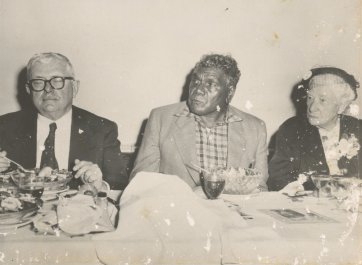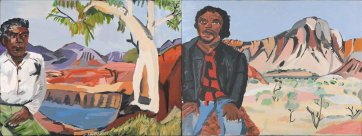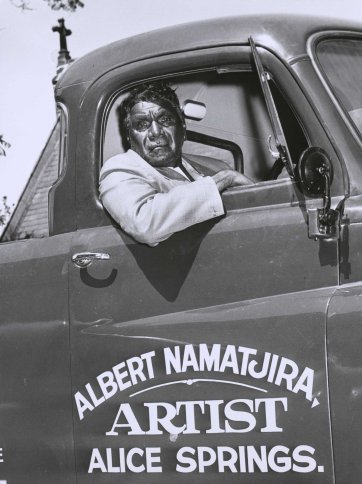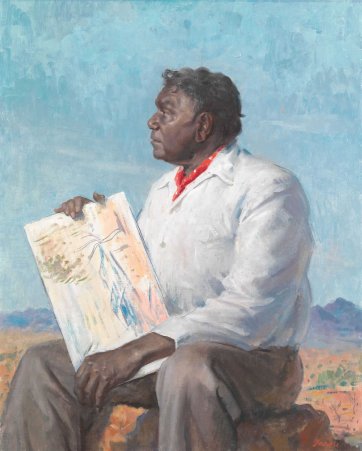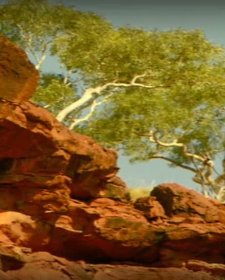Albert Namatjira (1902 – 1959), artist, learned to paint at the Hermannsburg Mission in the 1930s. He was persuaded to exhibit his watercolours in Melbourne in 1938, and the exhibition sold out in two days. During the 1940s his work became fashionable throughout Australia and he was the subject of a biography and a film. In 1954 Namatjira met the Queen in Canberra, and he was awarded citizenship status in 1957. One of the consequences of citizenship was that Namatjira was legally entitled to buy alcohol, but when he shared it with his fellow Arrernte, as custom required, he was sentenced to imprisonment. Although the sentence was commuted, he never recovered, and died the following year. Nearly 50 years later, Namatjira remains the best-known of Australian Aboriginal painters.
Charles Chauvel, actor and film-maker, worked on the sets of Snowy Baker films as a young man, and followed the great action hero to Hollywood in 1921. He directed two silent films, Moth of the Moonbi (1925) and Greenhide (1926) and then, in 1928, accompanied by his wife and collaborator Elsa, he spent a year in Hollywood trying to find a distributor just as the advent of sound had killed the demand for silents. Back in Australia he directed his first talkie, In The Wake of the Bounty (1933), starring the then-unknown Errol Flynn. Chauvel's best-known film is probably Forty Thousand Horsemen (1940) a tribute to the Light Horse, set in the sands of Palestine and shot in the sands of Cronulla. His later films included Jedda (1955), Australia's first colour feature.
Ric Chauvel Carlsson, Charles Chauvel’s grandson, has related the family history that this photograph was taken by his grandfather on the reconnaissance trip to Hermannsburg to prepare for filming either his 1955 feature film Jedda or the 1958 Australian Walkabout series that Chauvel made for the BBC.
Collection: National Portrait Gallery
Purchased 2017

